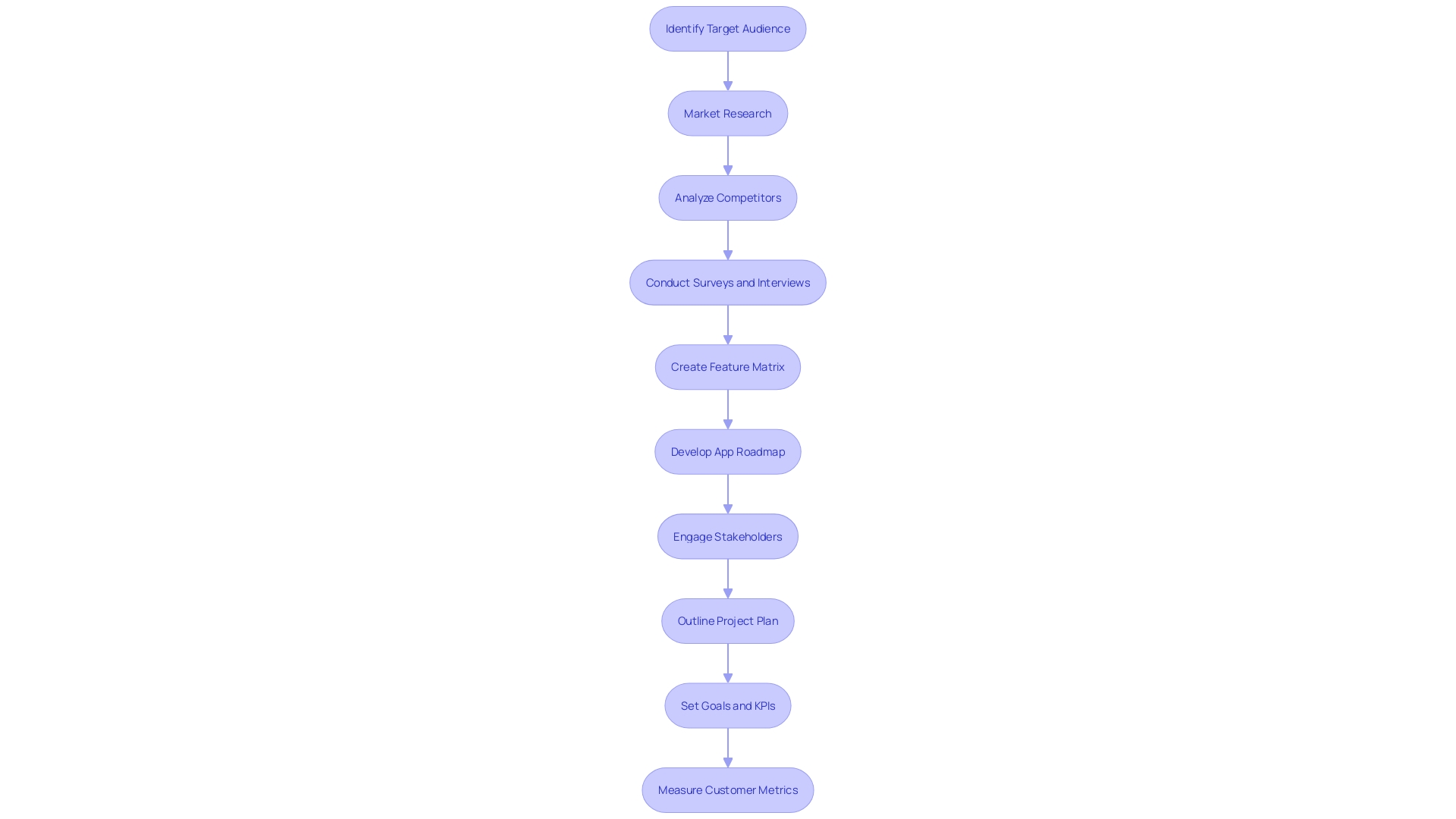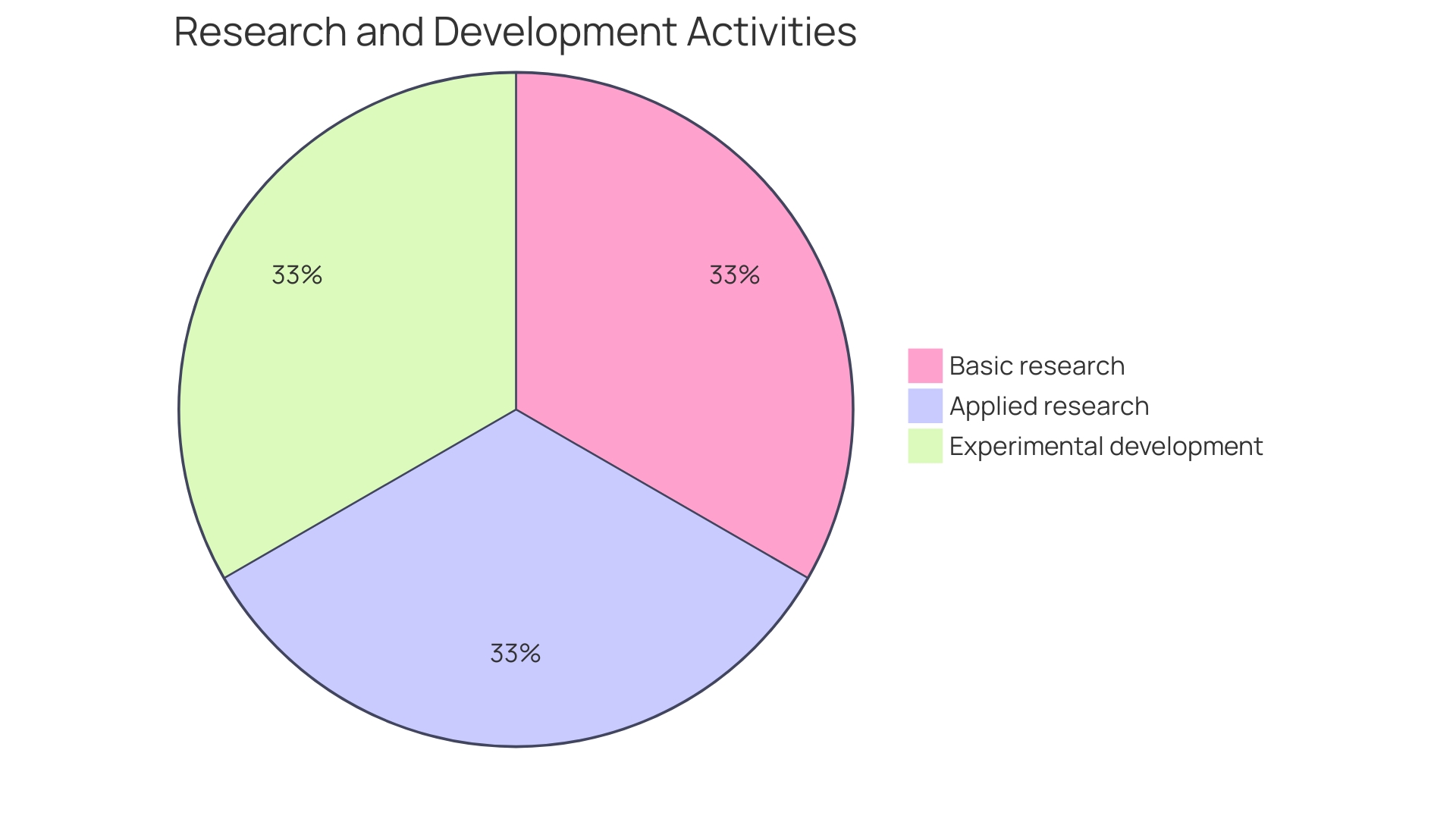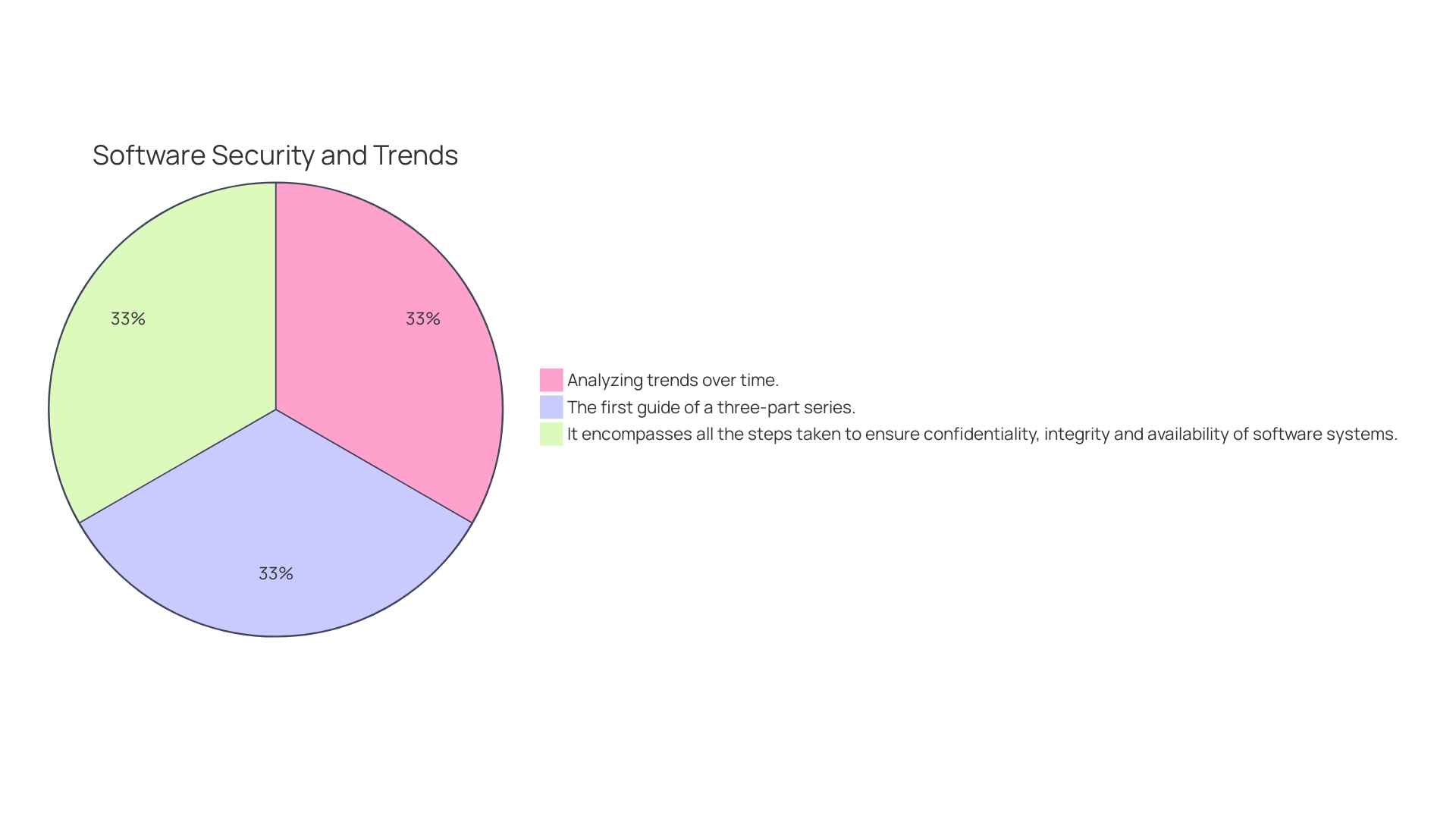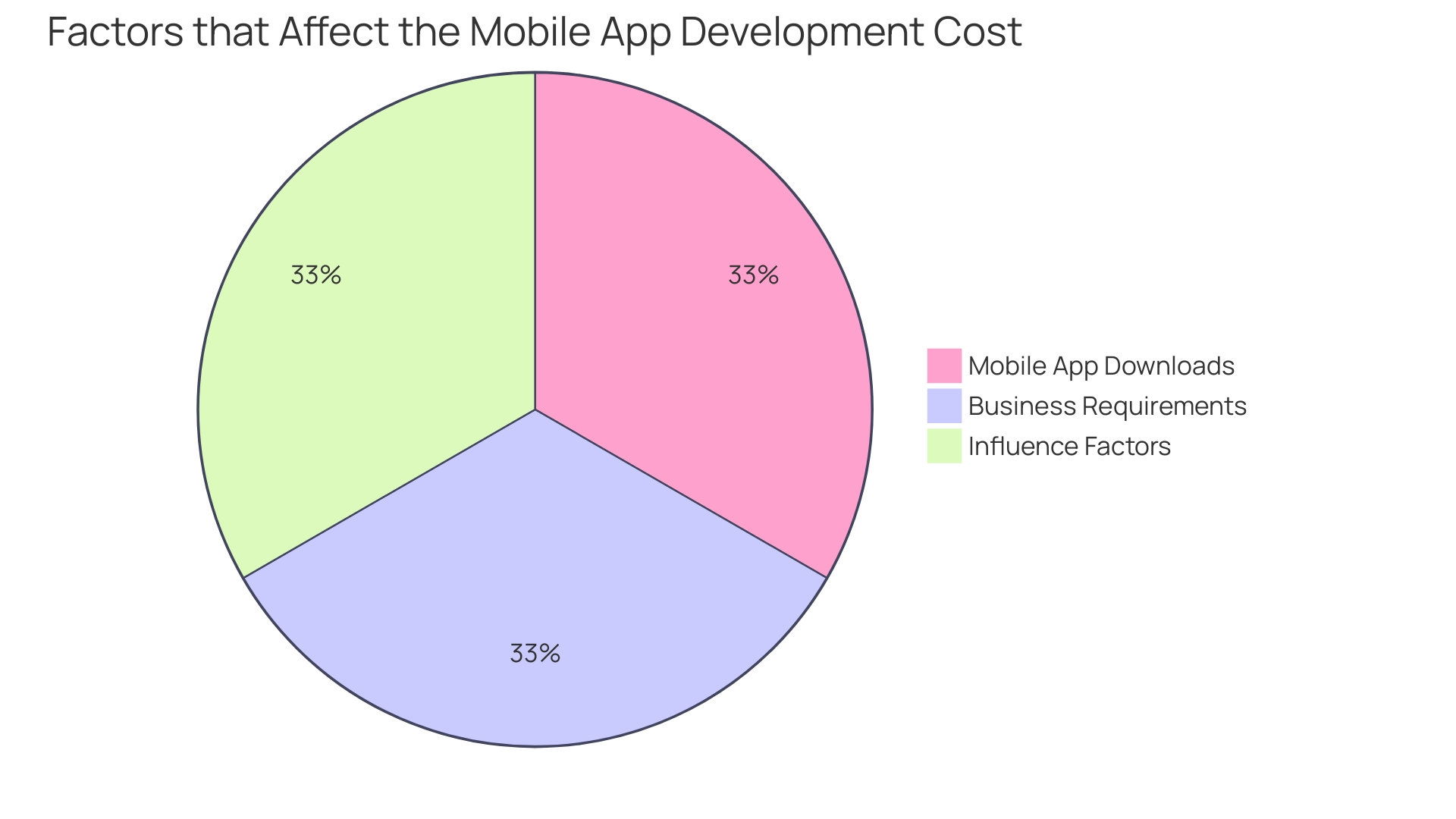Introduction
In the world of software development, defining the project scope and objectives is a critical step that sets the foundation for success. It goes beyond mere paperwork; it shapes the entire lifecycle of the software product. By gathering and documenting requirements from stakeholders, a roadmap is established to guide the software's functionality and achievements.
This systematic approach, guided by engineering principles, ensures efficiency, reliability, and cost-effectiveness. Incorporating project management techniques further streamlines the development process, allowing for precision and efficiency. The software engineering process continually improves through assessment and refinement, ensuring scalability for future needs.
In this article, we will explore the importance of defining project scope and objectives, analyzing requirements and prioritizing features, breaking down projects into manageable tasks, estimating labor costs and resource requirements, considering ongoing costs and scalability, conducting risk analysis and developing mitigation strategies, setting aside a contingency budget, and regularly reviewing and updating the budget plan. By following these best practices, software developers can navigate the complexities of budgeting and maximize the efficiency and effectiveness of their investments.
Define Project Scope and Objectives
Defining the scope and setting clear objectives at the outset of a software development project is more than just preliminary paperwork; it is a critical foundation that shapes the entire lifecycle of the software product. By extensively gathering and documenting requirements from stakeholders, you establish a roadmap for what the software should achieve and how it will function. As the Software Engineer Book of Knowledge (SWEBOK) details, the software engineering process involves a cycle of activities from inception through to retirement, all of which are contingent on a well-defined scope to ensure efficiency, reliability, and cost-effectiveness.
This systematic approach to software development is not just about coding but also about applying engineering principles to meet the specific needs of stakeholders. As noted in the discussion on the evolution of software engineering, our discipline has matured to manage the complexities of systems development to deliver high-quality products within budget and on time. The structure and communication within a software team, as the architectural blueprint of the project, directly influence the final product.
Just as the Hoover Dam's massive scale required meticulous planning and clear objectives, so too does software development benefit from a structured process that mitigates scope creep and aligns with strategic business goals.
Incorporating project management techniques such as critical path analysis, automation, agility, and Kanban can further streamline the development process. These methods have been repeatedly validated for their effectiveness in delivering projects with precision and efficiency. For instance, establishing SMART (Specific, Measurable, Achievable, Relevant, and Time-bound) objectives ensures clarity and measurability.
Defining the project scope and boundaries early prevents misunderstandings and keeps the project team focused on the agreed-upon deliverables. Our collective experience in software development underscores the importance of a comprehensive project plan that serves as a guide for execution and a mechanism for accountability.
The software engineering process is not static but continually improves through assessment and refinement, just as our understanding of project management has evolved with new techniques and insights. The focus on a systematic, measurable, and repeatable approach is paramount for the success of any software project, ensuring that it not only meets current requirements but is also scalable for future needs.

Analyze Project Requirements and Prioritize Features
Prioritizing features during the development of a fitness app is a strategic task that aligns closely with the expectations and needs of its intended users. It is a nuanced process of balancing what is desirable with what is viable within the constraints of budget and time. To ensure that the most valuable functionalities are brought to the fore, creating a feature matrix is a critical starting point.
This high-level overview not only documents the value offered to users but also aids in tracking the development progress.
A comprehensive understanding of your software's requirements is essential. These requirements are operational, functional, or design constraints that are clear, testable, measurable, and crucial for product acceptance. They should stem from real-world problems that your software aims to solve.
It is vital to engage with stakeholders to identify and prioritize these needs, which may involve conducting interviews, surveys, and workshops to gather comprehensive requirements.
The project plan should outline the scope, including features, functionality, timeline, and budget, while identifying potential risks and how to mitigate them. Think of releases as the 'when' and features and requirements as the 'what' of your development cycle. Each feature can have multiple requirements, and by setting measurable goals and relevant Key Performance Indicators (KPIs), you can assess the progress of your development effectively.
Moreover, customer metrics such as Customer Lifetime Value (CLV) can gauge satisfaction and retention, helping to measure the long-term value derived from customer relationships. Remember, every successful software development life cycle begins with setting these measurable goals. Therefore, in the intricate dance of software development, understanding and prioritizing requirements is not just a step but an ongoing commitment to delivering a fitness app that resonates with users and thrives in a competitive market.

Break Down the Project into Manageable Tasks
Understanding the granular aspects of a project is crucial in software development, where breaking down complex tasks into smaller, actionable components streamlines the process. By doing so, each task can be precisely allocated to individual team members, enhancing the ability to monitor progress, manage resources, and estimate time and costs efficiently. Project management methodologies, particularly Agile, endorse an iterative and incremental approach, which aligns with this strategy.
Akin to managing a multifaceted venture such as restoring a vast tract of land, where a myriad of tasks demands meticulous planning and execution, software development benefits from a similar decomposition of tasks. This method was also pivotal in the construction of the Hoover Dam, where the enormity of the project necessitated delegating responsibilities to specialists, thereby reducing the complexity into manageable portions.
Employing Agile principles fosters this process by providing a structured framework that emphasizes transparency, adaptability, and continuous improvement. The iterative nature of Agile allows for rapid detection and correction of issues, which is essential in maintaining project momentum. Furthermore, by employing tools such as critical path analysis and Kanban, project managers can enhance efficiency and ensure that software projects are completed within scope and budget.
In practice, when beginning a new project, it's beneficial to establish clear objectives, define scope, and plan meticulously. This approach, coupled with an understanding of the project's fundamental purpose and essential features, sets the stage for successful execution. Real-world examples and insights from seasoned professionals underscore the importance of singular focus and the perils of divided attention in software engineering, where each feature is implemented in fully functional segments for efficiency.

Estimate Labor Costs and Resource Requirements
Accurate estimation of labor expenses and resource allocation is a cornerstone of successful software development budgeting. It's essential to gauge the proficiency and tenure of the software development team, and to meticulously calculate the time investment required for each segment of the project. It's also prudent to account for any additional experts or contractors that may be indispensable.
Software development has evolved into the linchpin of myriad industries, transcending beyond mere coding to encompass comprehensive business solutions, user experience design, and extensive validation processes. With the significance of these investments in time and resources, a thorough vetting of all options is critical before dedicating efforts to a particular approach.
Recent deliberations by the Financial Accounting Standards Board underscore the importance of precise accounting for software development costs. Their proposed changes aim to streamline and clarify the reporting process for companies, reflecting the pervasive use of software in business operations.
Research has illuminated that high-level programming languages can enhance productivity by yielding a greater number of lines of code per developer, underscoring the need to select suitable languages and consider the implications on developer efficiency and project timelines.
The wisdom of Fred Brooks, author of 'The Mythical Man-Month', remains pertinent today, advocating for a lean, adept team and meticulous planning. His observations about the constancy of productivity regardless of programming language, the intricacies of software estimation, and the impact of adding personnel to delayed projects are just as relevant to modern software development practices.
As the tech industry burgeons and the roles within it diversify, understanding the current landscape is vital. With over 13.4 million professional developers globally as of 2023, the field is more robust and varied than ever. Such insights can guide strategic planning and forecasting for software development endeavors.

Consider Ongoing Costs and Scalability
As the digital spine of various industries, software development is not just about encoding ideas into computer language. It's a complex process that goes beyond coding; it encompasses a deep understanding of business needs, validating ideas, and crafting user experiences. The investment in software engineering is significant, not just financially but also in terms of time and resources.
It's not only the initial coding that matters, but the ongoing development, maintenance, updates, and the potential for future enhancements that must be thoughtfully planned. A broad view is essential for successful outcomes, considering not only the immediate needs but also the scalability to meet future growth and changes in user demands. This holistic approach is crucial in avoiding unforeseen expenses and ensuring the long-term sustainability of your software.
With the recent proposal by the Financial Accounting Standards Board to require companies to report cash spending on software, the financial transparency of software development costs has become even more important. As such, companies need to carefully consider their software investments and recognize the full scope of development costs, from tactical and operational to long-term architectural considerations.

Conduct Risk Analysis and Develop Mitigation Strategies
In the intricate dance of software development, navigating the myriad of potential risks is akin to performing a complex ballet. Skilled developers and project managers know that technical complexities, fluctuating requirements, and resource limitations are but a few of the variables that can throw a project off course. As we delve into the realm of Software Risk Analysis, it becomes clear that this is not merely a precautionary measure—it is an essential strategy for identifying and mitigating the various hazards that could derail a project's objectives, schedule, and financial plan.
The essence of risk analysis lies in its systematic approach to recognizing and evaluating the factors that could negatively impact software quality and deliverability. This is not an endeavor to eradicate all risks, as such a goal is unfeasible. Instead, the focus is on understanding the potential impact and likelihood of these risks to strategize their management.
Consider the Hoover Dam, a marvel of engineering; despite its vast scale, meticulous planning and risk assessment were paramount to its successful construction. By integrating this same level of rigor into software development through consistent risk assessments, teams can preemptively address vulnerabilities and enhance the product's overall security and integrity.
As we peer into the future, the surge in open source and AI-generated code amplifies the urgency for vigilance. The 2024 OSSRA report underscores the critical nature of understanding what is in your code. With an overwhelming 96% of applications containing open source components, and an average of 526 such components per application, the report emphasizes the dire need for automated security testing.
The sheer volume of components makes manual testing impractical, necessitating sophisticated software composition analysis tools for effective risk management. By embracing these insights and methodologies, teams can fortify their projects against the unpredictable tides of software development, ensuring a more stable and secure outcome.

Set Aside a Contingency Budget
When planning the financials for the development of a fitness app, it's prudent to not only consider the evident costs but also those that could arise unexpectedly. To this end, setting aside a contingency fund is a strategic move. This fund acts as an insurance against unforeseen expenses that could emerge as the project unfolds.
For example, when the Ford Foundation upgraded their website, they encountered needs that hadn't been anticipated at the outset, highlighting the importance of flexibility in budgeting. Similarly, the federal government’s last-minute decision to declare a holiday in honor of Ronald Reagan underscores the potential for unpredicted events that can disrupt even the most well-thought-out plans. A reasonable amount of the total budget, typically recommended by experts to be around 10-20%, should be earmarked for this contingency to ensure that the project can adapt to any surprises without financial strain.
This foresight in budgeting is underpinned by the knowledge that software development is not just about coding; it's a complex process that might involve changes in scope, technology upgrades, or refinement of initial ideas. By allowing for a financial cushion, developers can ensure that the project remains on track, even when faced with the inevitable unknowns that accompany the creation of innovative and significant software.

Regularly Review and Update the Budget Plan
Crafting a robust software development budget requires more than a one-off plan; it's an iterative process that demands continuous monitoring and realignment. As you steer the project through its lifecycle, it's crucial to keep a keen eye on its financial trajectory. This means tracking progress meticulously, pinpointing where actual spending diverges from your initial projections, and tweaking your financial strategy accordingly to stay on course.
In the modern era where software is an integral component across industries, the scope of software engineering stretches beyond coding. It's a complex tapestry woven from understanding the business landscape, refining ideas, and sculpting user experiences. Coding, while essential, is just one thread in this fabric and commands significant investment in both time and capital.
Hence, a thorough evaluation of all potential avenues is indispensable prior to cementing your development direction.
To grasp the essence of software estimation, envision preparing for a festive gathering with a shopping list in hand and a set budget. Your focus isn't on the volume of transactions, the cart's size, or the number of store visitors; it's on acquiring everything on your list within your financial confines.
Reflecting on insights from Jurgen Appelo, it's clear that yearly budget cycles are outdated in a world where business dynamics are in constant flux. A more agile approach that forgoes traditional budgets in favor of performance-based forecasts may be more fitting. This perspective aligns with the notion that fundamental actions, those critical to feature creation, must be identified and quantified based on empirical evidence, shifting the focus from internal processes to tangible results.
Moreover, recognizing that software development is an amalgamation of basic research, applied research, and experimental development can provide clarity. It's about producing or enhancing products and processes, underscored by the generation of new knowledge and the design and testing of prototypes. This comprehensive understanding can guide your budgeting decisions, ensuring they are proactive rather than reactive, and allowing you to adapt to the evolving needs of your project and organization.
Best Practices for Effective Budget Implementation
When it comes to budgeting in software development, a strategic approach is essential for ensuring that you get the most value out of every dollar spent. It starts with a deep analysis of how your team spends their time—distinguishing between fundamental actions that directly contribute to product features and non-essential ones. This analytical perspective is crucial because, as recent updates from the Financial Accounting Standards Board suggest, there's a growing need for greater transparency and accountability in software costs.
To enhance budgeting efficiency:
-
Monitor expenses closely: Keep an eye on spending to ensure it aligns with your project goals, considering both the essential actions that drive feature creation and the broader financial reporting requirements.
-
Foster open communication: Engage with your development team regularly. Understanding their perspective can shed light on the true cost and effort required for each task.
-
Leverage project management tools: These tools can provide valuable insights into the allocation of time and resources, giving you better control over the budget.
-
Evaluate ROI continuously: Consider the return on investment throughout the development process, which involves acknowledging the human element of programming—rest, vacation, and non-work time.
-
Incorporate stakeholder feedback: Their input is invaluable in understanding the practical impact and value of the development work, akin to knowing what to prioritize on a shopping list within a set budget.
By implementing these practices, you'll be able to navigate the complexities of software development budgeting, from initial estimations to final expenditures, thereby maximizing the efficiency and effectiveness of your investment.
Conclusion
In conclusion, defining project scope and objectives is crucial for successful software development. By gathering and documenting requirements, a roadmap is established for efficient and cost-effective development. Analyzing project requirements and prioritizing features aligns with user needs and sets measurable goals.
Breaking down projects into manageable tasks streamlines development, while accurate estimation of labor costs and resources is vital for budgeting. Considering ongoing costs and scalability ensures long-term sustainability.
Conducting risk analysis and developing mitigation strategies is essential to address challenges. Setting aside a contingency budget provides a financial cushion. Regularly reviewing and updating the budget plan allows for adaptation.
Implementing best practices like monitoring expenses, fostering open communication, leveraging project management tools, evaluating ROI, and incorporating stakeholder feedback enhances budgeting efficiency.
By following these practices, software developers can navigate complexities and maximize efficiency. This strategic approach, guided by expertise, ensures successful software development that meets stakeholder needs and achieves desired outcomes.





